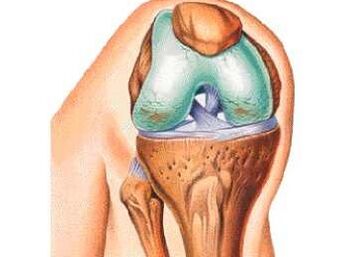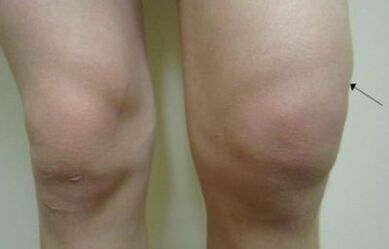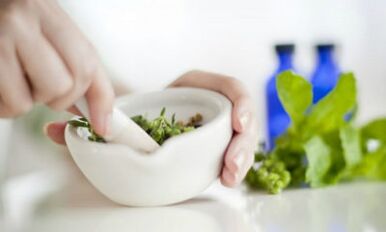Arthrosis or osteoarthrosis of the knee joint is a disease that occurs against the background of dystrophic changes with subsequent rising connective tissue.There are many factors that affect the development of the disease, but all of them ultimately lead to a breach of metabolism in the cartilage.In medical literature, the arthrosis of the knee joint is called gonartrosis.
According to statistics, gonartrosis occupies a leading position in the frequency of phenomenon between other arthrosis.The disease brings a severe discomfort, which can be developed into the pain when walking and at rest.
Knowledge of early symptoms will help to suspect the development of pathology and heal it in the initial phases.
Reasons
According to the medical classification, there is primary and secondary gonortiness or arthrosis of the knee wrist.
The arthrosis of the knee joint may appear on the background of various diseases or act as their complication.When, due to an unclear history or clinical image, the exact cause cannot be established, gonartrosis is called primary, but if the cause is known, then such arthrosis is called secondary.
Arthrosis is developing with years in almost all people, on average, this period begins after 45-50 years of age.
The course and pathogenesis of primary and secondary arthrosis are the same and do not depend on the cause of the occurrence.
The most common causes of arthrosis and osteoarthrosis of the common knee are:
- Traumatic knee damage;
- Shared deformation inward and externally;
- shortening of one lower limb;
- abnormal wrist hypermobility;
- Displasia chondroblast;
- Calcinosis of cartilage;
- Osteomyelitis of femur and tibia;
- rheumatoid arthritis or arthritis of any other etiology;
- glucose metabolism;
- Metabolic diseases and hormone diseases.
Injuries.After receiving the injury of the knee in the shared cavity, inflammation with a large aiteration focus can be developed.After the disappearance of pro -inflamatory agents, repair or arthrosis processes are activated.
The most common disease occurs on the background of fractures with rupt ligaments and damage the bag and the surface of the cartilage wrist.

Congenital deformations.Valgus or variant deformations are found very often and without proper correction can be complicated with sclerotic changes in the knee.This happens due to the fact that one of the knees falls more than the cargo than it should be.
Shortening of any of the lower extremities.As with deformations, in pathogenesis of disease development, irregular weight distribution on the knees plays a role.
Hypermori knees.In this state, the consumer of cartilage tissue knee joints with subsequent degeneration and degeneration in arthrosis may occur.Hypermoric often leads to spontaneous dislocations and sprain capsules in common.
Manual -ragous dysplasia.Due to the improper development of the motor surface in the knee joint, there is a pathological growth of connective tissue.
The calcinosis of the wrist.Patogenesis is based on salt precipitation in the common cavity and the formation of a certain precipitate, which causes calcification with subsequent osteoarthritis.
Osteomyelitis.Inflammatory bacterial disease in which bone and joint destruction occurs.First, ankylose and only then sclerosis are formed.
Arthritis of any etiology.The most dangerous are rheumatoid arthritis, accompanied by autoimmic heart lesions and joints.
Diabetes, such as metabolic disorders, leads to violating the flow of nutrients in the joint and germinate cartilage.
Obesity.With the great weight of the body, high loads are on your knees when walking and in a standing position.As a result of constant pressure, blood flow into knee joints decreases, and atrophy with the dystrophy is developing.
Symptoms

Symptoms with the arthrosis of the knee joint depend on the phase of the pathological process.Based on that, analyzing symptoms and pace of their growth, you can estimate the scale of changes in the paper tissue.
Symptoms of the knee arthrosis:
- The presence of pathological sounds during the movement;
- painfulness after loading or at rest;
- Function reduction;
- Edema and shared growth;
- Pathological dislocation, fractures and subcluded;
- A temporary header that can occur when flexion and extension of the wrist.
The click and crumbs are not immediately noticed, and if noticed, they do not pay due attention.Pathological sounds face the idea of a pathological process with the deposition of salt or formation of osteophytes occur in the gap in the cartilage.
Pain occurs due to calcination or osteophyte formation.At first, the syndrome pain does not express it, later appears only in the morning and crosses after lunch, with the advancement of the disease, the pain may appear at rest.
Reducing common functions is manifested in motion stiffness and reduction in their amplitude.Depending on the stage, the restriction of the movement may take a certain time and pass in rest.
Edem appears due to inflammation and hypersecision of the sinue fluid.There are also options when the skin is on the joints.Such symptoms can be with a grilling fever or rheumatism.
For reasons, dislocations and subclusion that the process refers to bones and knee ligaments.
Clushing is a condition during which movement in any axis is completely limited.Such a symptom points to the ignorance of the process and the need for complex treatment.
Degree of arthrosis

Classify osteoarthritis according to the following characters:
- Radiological symptoms;
- Clinical manifestations;
- Laboratory data.
The most common and practical classification is radiological, is simple and understandable even for people without medical education.
Based on the X -Rays, the four degrees of arthrosis in the knee joints are abolished:
- The reduction in the joint gap is small, and there is no osteophyte;
- Gap intersipint are not knocked, but there are signs of small calculations or osteophytes;
- GAP intersipint has a narrowing of expression, there is osteofiti, a common deformation begins;
- Lack of common gap, bone deformation, ANKILOSES AND DISTROPHY.
As for the clinical picture, the following phases are characterized:
- Mild symptoms of degrees are insignificant, they occur in the morning and pass 30-60 minutes after waking;
- The average degree is expressed symptoms, the feeling of discomfort passes before lunch, swelling is slight, rapidly advancing without treatment;
- A difficult diploma - characterized by constant painful pain, resting uneasy, morning rigidity does not go to dinner, ankylosis, burgis and sinusitis knee wrist.
Laboratory tests are taken into account, soybean and leukocyte indicators are evaluated.It is also necessary to check the presence of rheumatoid factors.
Diagnostic methods
The diagnosis of the knee joint arthrosis is not complicated, but requires certain doctors' skills.
Different two types of diagnostic measures:
- Laboratory diagnostics;
- Instrumental diagnostics.
For the correct diagnosis, each of the methods should be considered and analyzed the image as a whole.
Laboratory
If suspicion of arthrosis, a doctor who attends prescribes the following tests:
- General blood and urine test;
- Biochemical blood test;
- Determination of antibodies to rheumatoid factor;
- Determination of antibodies into their cells.
Laboratory data does not implement information on the disease development phase.
Instrumental

The instrumental diagnosis of arthrosis includes the following methods:
- radiography in two standard projections;
- Minimum invasive arthroscopy;
- UZD test;
- Ct;
- MRI;
- Scintigraphy (according to indication).
Radiation diagnostics is focused on determining the changes in the joint and to assess the condition of the cartilage.
Treatment
Treatment Arthrosis The knee joint is a long process.The duration of treatment is due to the fact that the reparation of the cartilage tissue appears very slowly, and in some cases it is completely impossible to return the wrist.
Modern methods of treatment of arthrosis in the knee joint include comprehensive measures that are aimed at removing inflammation, normalizing lifestyle and improving cartilage tissue metabolism.
There are such methods of therapy:
- Drug therapy;
- Exercise and massage therapy;
- Folk medicine;
- Surgical interventions.
The doctor prescribes treatment based on the duration of the disease, the phase of his development and clinical events.
Medications
Drug therapy aims to mitigate pain and inflammatory reaction.The following medications are prescribed for this purpose:
- not -steroidal anti -infalmatory;
- Chondroprotectors;
- glucocorticoid;
- Cytostatic.
The tablets from the knee joint arthrosis have many side effects, in treatment it is necessary to monitor the condition of the gastrointestinal tract and the kidneys.
Often arthrosis medications are prescribed for a long time, so the least toxic drugs should be selected.
Exercise
Treatment of arthrosis using exercise therapy aims to strengthen muscle and knee ligaments.With dosed loads in the cartilage of a sick compound, metabolism improves, and regenerative processes are accelerated.
Exercises should be selected individually, taking into account the phase of the patient's disease and physical abilities.
Massage
The knee joint massage allows you to improve blood flow and relieve discomfort.A regular massage can prevent the appearance of surveys and false compounds.
Peoples
Treatment Arthrosis The knee joint at home should not be the main method of combating pathology or can only act as an add-on for medications.

Home treatment includes:
- Reduction of body weight;
- Normalization of labor hygiene and respect for the regime of the day;
- Fight against inflammation.
Anti -inflamatory effect owns such plants:
- Tincture of thyme and St. John;
- Leaves for Burdock;
- White cabbage leaves;
- Infusions and decoctions from dandelions and chamomile.
Surgery
The operation is prescribed by the inefficientness of conservative therapy or on the patient's request.One of the main indications for surgical intervention is the fourth phase of the disease of radiological characteristics.
During surgery, surgeons can completely replace the endoprotez joint or change one of its parts.

























